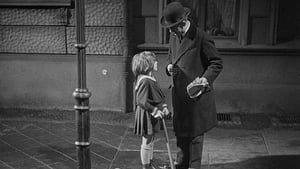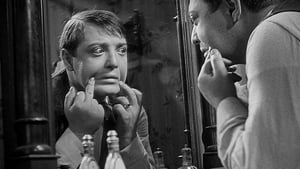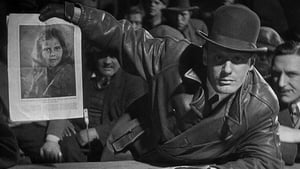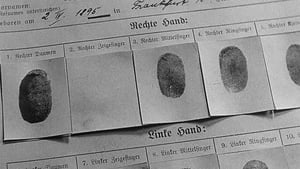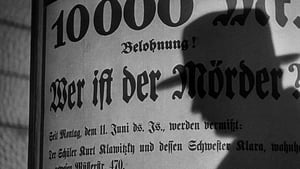Contact: [email protected]
Video Sources 0 Views
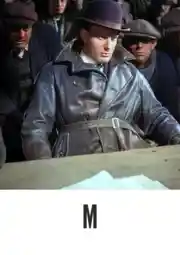
Synopsis
[ez-toc]




Introduction
In the annals of cinema, certain films stand as timeless pillars, marking milestones in the evolution of the art form. Among them, Fritz Lang’s “M – Eine Stadt sucht einen Mörder Colorized” (1931) is an indelible entry, recognized for its groundbreaking narrative and its significant place in the psychological thriller genre. This article explores the transformative journey of this classic, delving into the directorial prowess of Fritz Lang, the haunting performance by Peter Lorre, and the recent controversial decision to colorize this cinematic gem.
Read Media File Transfer Agreement: Terms and Conditions
Read FAQ
The Evolution of Colorization in Film
Before we dive into the colorized version of “M – Eine Stadt sucht einen Mörder Colorized,” let’s embark on a journey through the evolution of colorization in film. The early 20th century was dominated by black-and-white films, not only due to technological constraints but also as a deliberate artistic choice. This aesthetic preference was rooted in the belief that monochrome offered a raw, unfiltered glimpse into the narrative, enhancing the emotional impact of the storytelling.
Early Experiments with Color in Cinema
The journey towards color in cinema began with hand-painting individual frames, a labor-intensive process that added a touch of vibrancy to the screen. Georges Méliès, a pioneer of cinema, experimented with this technique, laying the foundation for future endeavors. Tinting and toning techniques further contributed to the cinematic experience, allowing filmmakers to infuse mood and atmosphere into silent films.
The Emergence of Technicolor
In the 1930s, Technicolor emerged as a revolutionary force in the film industry. The three-strip Technicolor process provided filmmakers with a broader spectrum of colors, opening new avenues for visual storytelling. Classic films like “The Wizard of Oz” (1939) showcased the vibrancy made possible by this groundbreaking technology.
Challenges and Advancements in Digital Colorization
As technology advanced, so did the possibilities for colorization. Modern digital color grading tools allowed for precise control over the color palette, enhancing visual details for high-definition and 4K presentations. However, this progress wasn’t without controversy. The introduction of AI-assisted algorithms for automatic colorization sparked debates around authenticity and fidelity to the original artistic intent.
Examining the Colorized Version of “M – Eine Stadt sucht einen Mörder Colorized”
Now, let’s shift our focus to the colorized adaptation of “M – Eine Stadt sucht einen Mörder Colorized.” This controversial transformation aimed to breathe new life into the film, introducing it to a modern audience while retaining its historical essence.
The colorization process involved meticulous research and the expertise of skilled colorists to ensure accuracy. The outcome was a visually stunning rendition that highlighted the sociological layers within the narrative. The contrast between social strata and urban decay took on new dimensions, bringing forth an added richness to the film’s thematic elements.
Beyond the narrative impact, the colorization significantly influenced the cinematography. The juxtaposition of shadows and hues created a visual tapestry that intensified the psychological intensity of the film. Edvard Grieg’s “In the Hall of the Mountain King” resonated more profoundly, its haunting notes echoing through the chromatic palette.
The Debate Over Colorization: Artistic Integrity vs. Modern Appeal
As with any attempt to alter a cinematic masterpiece, the colorization of “M M – Eine Stadt sucht einen Mörder” sparked a heated debate within the film community. The discussion revolved around the delicate balance between preserving the original artistic vision and adapting films to suit modern preferences.
Industry professionals and critics found themselves divided, with some staunchly defending the sanctity of preserving old movies in their original black-and-white form. On the other hand, advocates for colorization argued that adding color could enhance accessibility and engagement for contemporary audiences.
The key takeaway from this ongoing debate is the importance of responsible colorization. Striking a balance between honoring the director’s intent and making classic films more palatable to a broader audience is crucial for preserving cinematic heritage.
Revisiting “M – Eine Stadt sucht einen Mörder Colorized” – A Timeless Masterpiece in Any Hue
Regardless of the colorization debate, “M – Eine Stadt sucht einen Mörder Colorized” remains an influential cinematic masterpiece with enduring sociopolitical relevance. The film’s narrative and themes continue to resonate with audiences, transcending the constraints of black-and-white or color.
This timeless quality speaks to the genius of Fritz Lang and the unforgettable performance by Peter Lorre. The story of Hans Beckert, the child murderer, unfolds against the backdrop of a city gripped by fear and societal unrest. The psychological intensity, coupled with the film’s exploration of morality and justice, ensures its place as a perennial classic.
Conclusion
In concluding our exploration of “M – Eine Stadt sucht einen Mörder Colorized 1931,” we find ourselves at the crossroads of tradition and modernity. The decision to add color to this classic film is undoubtedly contentious, yet the results are visually striking. As a film reviewer, the question remains: does the colorization enhance or detract from the overall viewing experience?
The answer, perhaps, lies in appreciating both versions for what they offer. The original black-and-white form preserves the authenticity of the 1931 cinematic experience, while the colorized adaptation breathes new life into the narrative, unveiling additional layers of sociological complexity.
As cinephiles, let us embrace the opportunity to witness “M – Eine Stadt sucht einen Mörder” in its various hues, acknowledging the diversity of interpretations that can coexist without diminishing the essence of a cinematic masterpiece. In the end, the debate over colorization underscores the enduring power of “M – Eine Stadt sucht einen Mörder” as a film that transcends time and color, leaving an indelible mark on the canvas of cinematic history.



